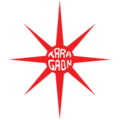तारागाउँ सङ्ग्रहालय | |
 | |
 The pod-style structure of buildings were originally a hostel for artists,writers and scholars | |
 | |
| Established | 2014 |
|---|---|
| Location | Boudha, Kathmandu, Nepal |
| Coordinates | 27°43′14″N85°21′22″E / 27.72048054°N 85.356247°E |
| Type | Art museum |
| Director | Roshan Mishra |
| Curator | Niels Gutschow |
| Architect | Carl Pruscha |
| Owner | Taragaon Regency Hotel |
| Website | taragaonmuseum |
The Taragaon Museum is a private museum located in Kathmandu. It is located in the northern part of the city near the Bouddhanath stupa. [1] It is situated on the ground of the Taragaon Regency hotel, which owns the museum. The museum is supported by the Saraf Foundation. The museum features a permanent collection in three of its building and a contemporary art gallery. [2]